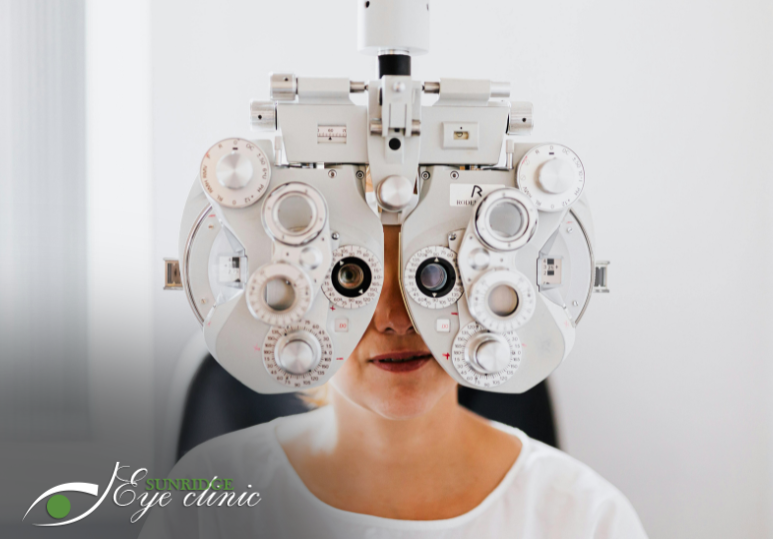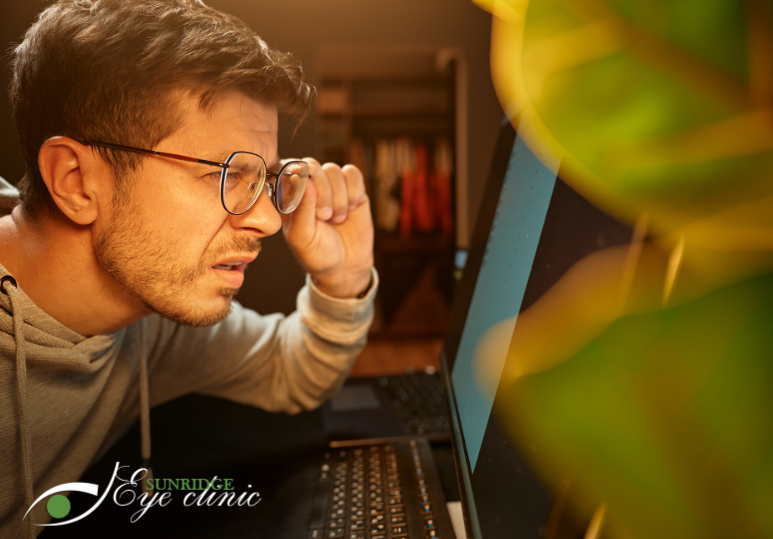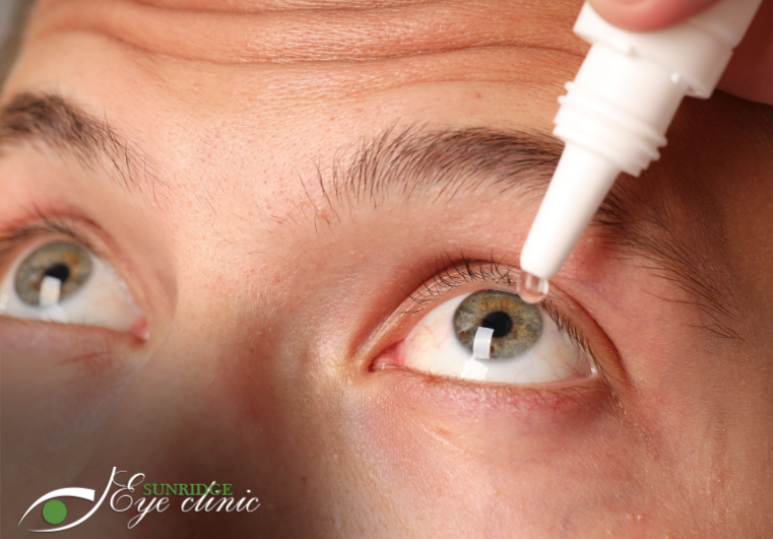Both children and adults can be affected by refractive errors, such as nearsightedness or farsightedness, and serious eye diseases, which is why having regular eye exams, no matter your age, is so important. Here’s the difference between adult and children’s eye exams and how our Calgary optometrist can protect your whole family’s eye health and vision.
Eye exams are an important part of health maintenance for everyone, no matter your age or physical health. Adults should have their eyes tested to regularly update their prescriptions and give their optometrist a chance to check for eye diseases. For children, visiting the eye doctor is critical because eyesight plays a huge role in normal development.
During an eye exam, your optometrist can:
- Determine your eyeglasses or contact lens prescription
- Check for signs of common eye diseases
- Assess how your eyes work together as a team
- Evaluate your eyes as an indicator of your overall health
Visiting a Kid’s Eye Doctor Will Boost Your Child’s Performance in School
Vision is closely linked to the learning process, which means that children who have trouble seeing will often struggle with their schoolwork. However, many times, children won’t complain about vision problems because they don’t know what ‘normal’ vision looks like.
Keep an eye out to see if your child is performing poorly at school, or exhibits trouble reading or performing near tasks. If so, you should schedule an eye exam with your optometrist right away.
Our Calgary Eye Doctors Provide Comprehensive Children, Adult, and Senior Eye Exams
At our Calgary eye clinic in Sunridge Mall, our team of friendly and professional eye doctors can conduct comprehensive children, adult, and senior eye exams, and provide a range of other eye health services, including glaucoma testing, eye emergency care, and cataract management, to protect the eye health of your entire family.
Want to know more?
CONTACT OUR CALGARY EYE CLINIC IN SUNRIDGE MALL
3 Ways Children’s Eye Exams Differ From Adult’s Eye Exams
Eye exams are extremely important for everyone, no matter your age. However, it’s also true that children have different needs compared to adults, and they need to be kept more comfortable and engaged during this appointment.
Here’s how your eye doctor can provide your kid with specialized care and attention, and three ways children’s eye exams differ from adult eye exams:
1. Your Eye Doctor Will Use Different Equipment
For adults, one of the main features of an eye exam is the use of a phoropter — a tool that resembles big binoculars that measures your refractive error. However, for children, verbalizing what is clear or blurry can be difficult, so other tools are used to better determine the clarity of their vision, including a retinoscope.
In addition to this, when measuring intraocular pressure, your eye doctor may use child-friendly devices that don’t require drops, ensuring that your child stays comfortable throughout the whole process.
Why is using different tools so important?
Using different tools will allow your eye doctor to effectively examine your child’s vision without overwhelming or stressing your little one out. This typically leads to better cooperation from your child and a smoother eye exam.
HOW TO PREPARE YOUR CHILD FOR AN EYE EXAM
2. For Toddlers, Games May Be Used
It is recommended that your child has his/her first eye exam at six months old and because of this, your eye doctor will often use games to test your little one’s eyes. Through ‘play’, your optometrist will be able to examine your child’s:
- Eye alignment
- Tracking
- Head posture
- Eye-hand coordination
- Peripheral vision
In many cases, your child’s eye doctor must be prepared to play, charm, and cajole their young patients to get the desired clinical information. That means that unlike with an adult eye exam, toys, funny voices, and stories, may all have roles in a successful kid’s eye exam.
3 IMPORTANT FACTS ABOUT CHILDREN’S EYESIGHT
3. Children Are Checked for Different Eye Conditions
During an adult eye exam, your eye doctor will be on the lookout for conditions such as cataracts or glaucoma. While optometrists still look for red flags during a children’s eye exam, they will primarily be looking to rule out the presence of:
- Amblyopia (lazy eye)
- Strabismus (crossed-eyes)
- Focusing difficulties
- Poor depth perception
In addition to this, your eye doctor will examine your child’s colour vision and will use retinoscopy to measure any refractive errors, such as myopia or hyperopia that could be affecting your child’s vision.
Contact Us
To find out more about our comprehensive children, adult, and senior eye exams, as well as our range of other eye health services, including dry eye care, contact lens fittings, and LASIK eye surgery consultations, contact our Calgary eye clinic at 403-280-7518 or fill in our online contact form.





